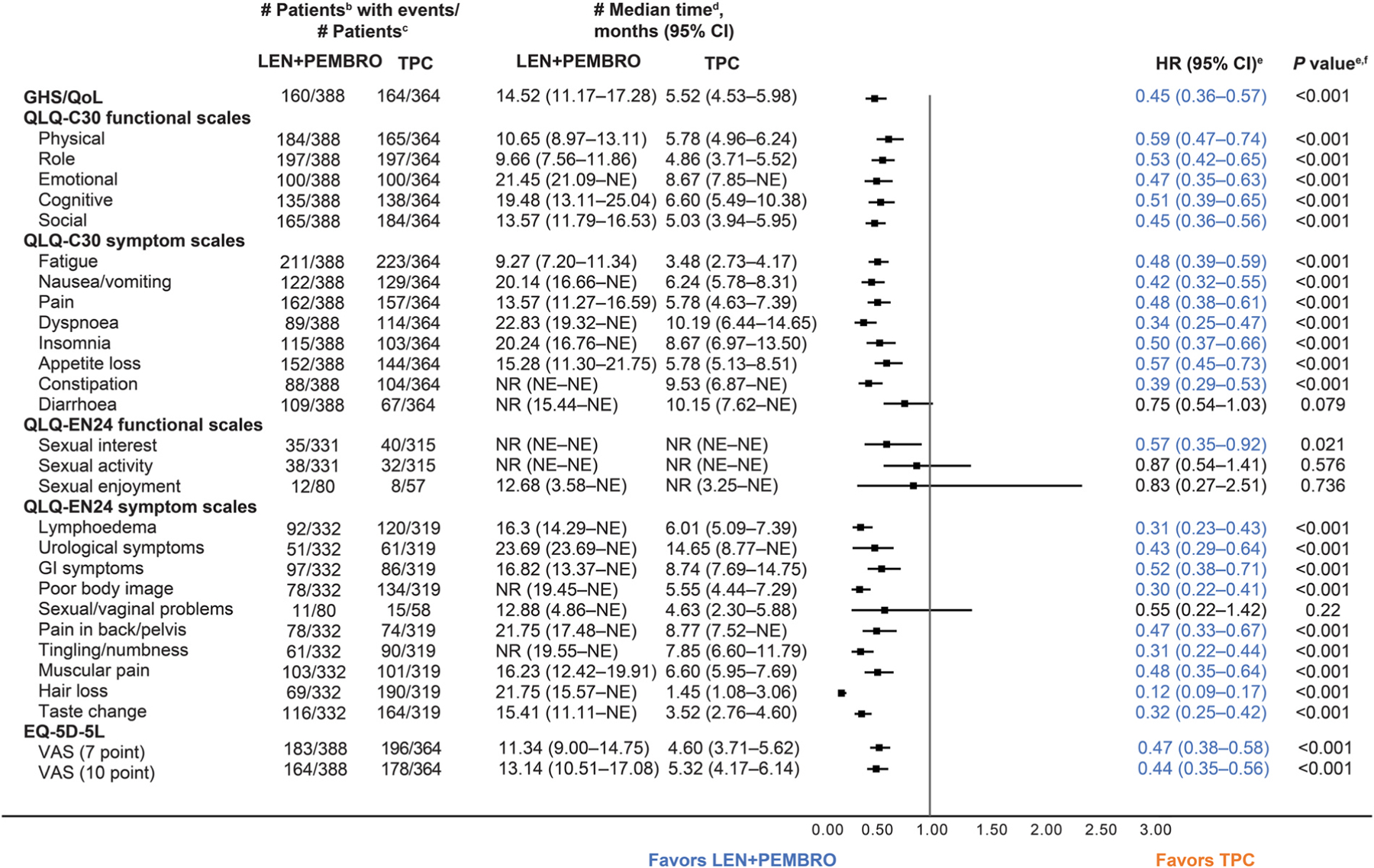Fig. 5.

Time to Definitive Deterioration in the All-Comer Populationa. aDatabase cutoff: 26th October 2020. bTime to definitive deterioration is defined as the time from first dose of treatment to first onset of ≥10 points decrease from baseline for functional scales (decrease of ≥7 points for the for VAS 7-point threshold) and ≥10 points increase for symptom scales from baseline without subsequent recovery or no subsequent assessment data; a longer time to deterioration is considered more favourable. cNumber of patients in the HRQoL full analysis set with available data. dFrom product-limit (Kaplan-Meier) method for censored data. eBased on Cox regression model with treatment as a covariate stratified by MMR status, ECOG PS, geographic region, and prior history of pelvic radiation. fTwosided P value using Wald test (score test in case of zero event in 1 treatment group). CI, confidence interval; ECOG PS, Eastern Cooperative Oncology Group performance status; EORTC QLQ-C30, European Organisation for Research and Treatment of Cancer Quality-of-Life Questionnaire; EORTC QLQ-EN24, EORTC QLQ-Endometrial, 24 questions; EQ-5D-5L, EuroQoL 5 dimensions, 5 levels; GHS/QoL, global health status/quality of life; GI, gastrointestinal; LEN, lenvatinib; MMR, mismatch repair; NE, not estimable; NR, not reached; PEMBRO, pembrolizumab; TPC, treatment of physician’s choice; VAS, visual analog scale.
